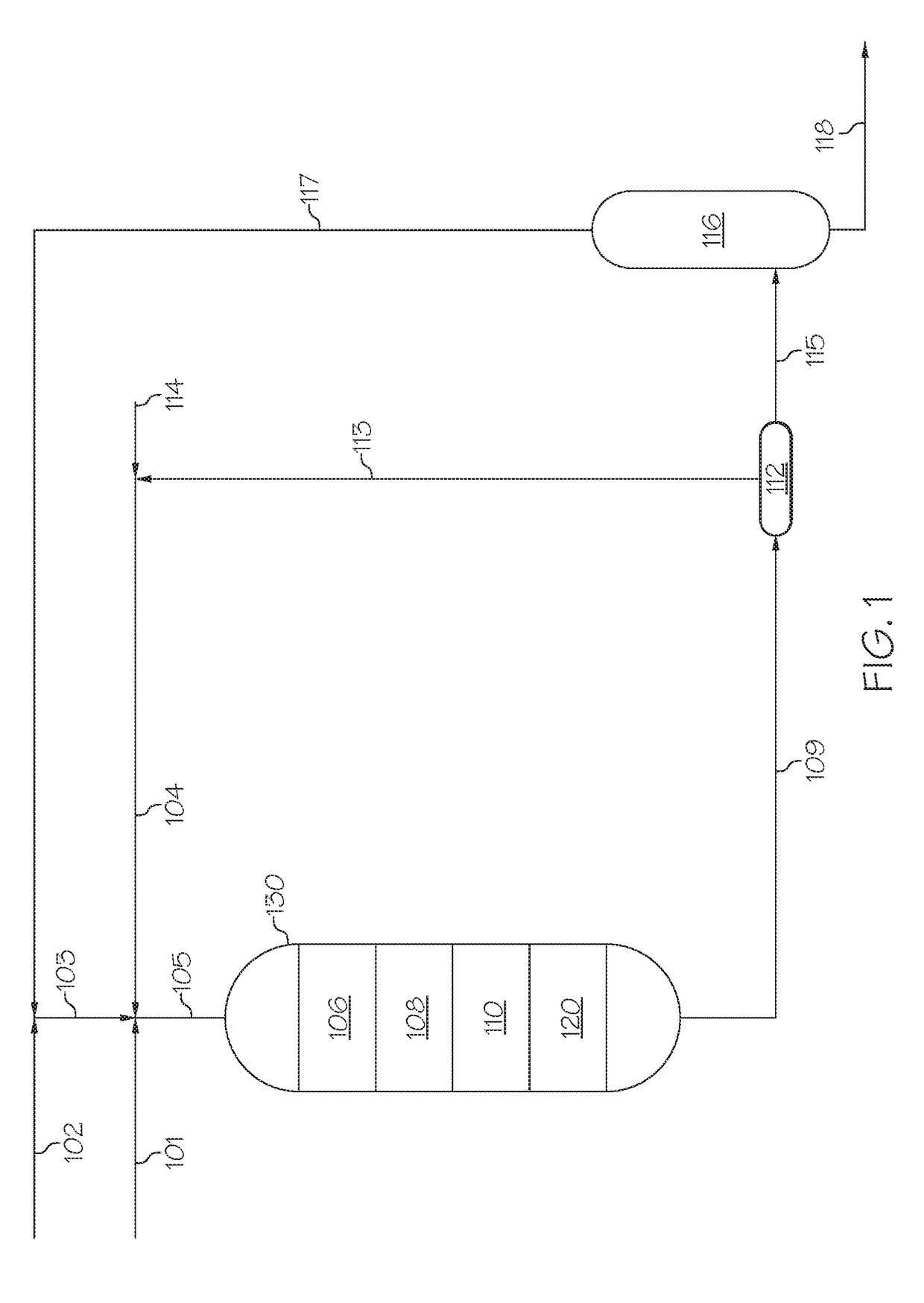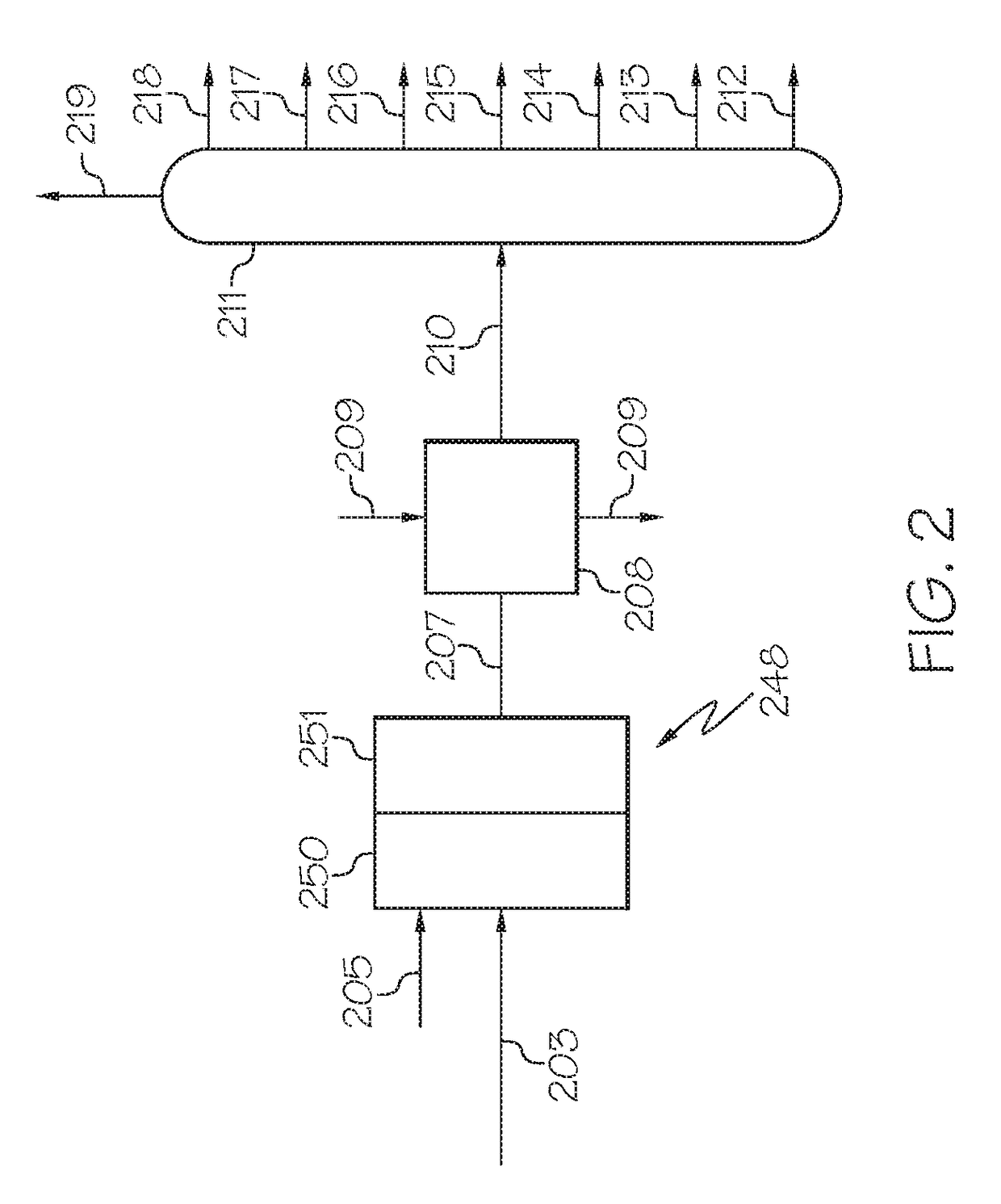Zeolites, the production thereof, and their uses for upgrading heavy oils
a technology of heavy oil and zeolites, applied in the field of zeolites, can solve the problems of increased coking, low light olefin content, steam cracking of heavy oil to form undesirable products, etc., and achieve the effect of low cost and less expensiv
- Summary
- Abstract
- Description
- Claims
- Application Information
AI Technical Summary
Benefits of technology
Problems solved by technology
Method used
Image
Examples
example 1
of Presently Disclosed Nano-Size, Mesoporous Zeolite Beta
[0079]To form nano-sized zeolite Beta, a fumed silica (AEROSIL® 200, available from Evonic Industries), aluminum powder, and tetraethylammonium hydroxide (TEAOH) (35 wt. % aqueous solution, available from Aldrich) were used as silica source, aluminum source, and template agent, respectively. The precursor gels had the oxide molar compositional ratio of 15-40TEAOH:20-500SiO2:Al2O3:500-1000H2O. The metal aluminum was dissolved in the part of TEAOH-containing aqueous solution to form a clear solution, and then added to the slurry made by fumed silica and the other part of the TEAOH-containing aqueous solution. The formed aluminosilicate fluid gel was stirred in a beaker at ambient temperature for 4 hours, and then transferred into a polytetrafluoro ethylene (PTFE) lined stainless steel autoclave. The crystallization was carried out at 100° C. to 150° C. for 1-7 hours, either under the static state in an oven or under the rotation...
example 2
ization of the Presently Disclosed Nano-Size, Mesoporous Zeolite Beta
[0081]The effect of synthesis conditions on the main properties of the nano-sized zeolite beta and nano-sized mesoporous zeolite beta was synthesized as described in Example 1, and studied in lab. The main properties of the nano-sized zeolites and nano-sized mesoporous zeolite beta were characterized by BET, XRD, TEM, NMR etc, and the results are summarized in Tables 2A, 2B, and 3, respectively.
TABLE 2ASample #1234Synthesis conditionStaticRotationStaticRotationat 60 rpmat 60 rpmStarting gel compositionSiO2 / Al2O3 molar ratio41.6505050TEAOH / Si molar ratio0.20.60.20.4H2O / Al2O3 molar ratio80010007001000Synthesis conditionTemperature, ° C.140140140140Time, days6688Main properties of productsXRDBetaBetaBetaBetaAverage particle size45035550120by TEM, nm
TABLE 2BSample #5678Synthesis conditionRotationRotationRotationRotationat 60 rpmat 60 rpmat 60 rpmat 60 rpmStarting gel compositionSiO2 / Al2O3 molar ratio41.6505050TEAOH / Si ...
PUM
| Property | Measurement | Unit |
|---|---|---|
| diameters | aaaaa | aaaaa |
| diameters | aaaaa | aaaaa |
| particle size | aaaaa | aaaaa |
Abstract
Description
Claims
Application Information
 Login to View More
Login to View More - R&D
- Intellectual Property
- Life Sciences
- Materials
- Tech Scout
- Unparalleled Data Quality
- Higher Quality Content
- 60% Fewer Hallucinations
Browse by: Latest US Patents, China's latest patents, Technical Efficacy Thesaurus, Application Domain, Technology Topic, Popular Technical Reports.
© 2025 PatSnap. All rights reserved.Legal|Privacy policy|Modern Slavery Act Transparency Statement|Sitemap|About US| Contact US: help@patsnap.com



